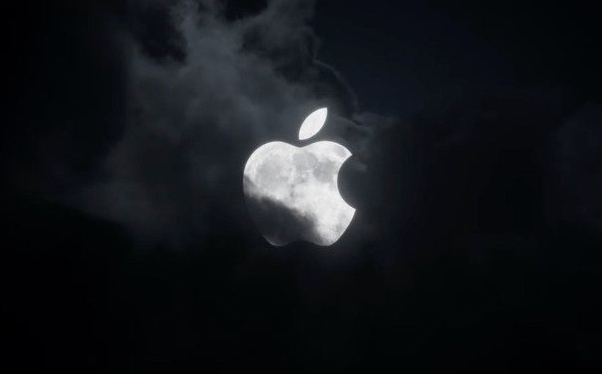Gatekeeper is a security feature of macOS that prevents unauthorized applications from running and prevents malware from jeopardizing devices. Gatekeeper on Apple computers is to check the source of the application and make sure that only those from Apple certified developers or reviewed applications can run. When trying to run an unauthenticated MachO file, Gatekeeper prevents it from executing. In some cases, if you need to install third-party or non-App Store software, you can temporarily close Gatekeeper. The first is to enter the command sudo spctl --master-disable through the terminal to disable it, and the second is to click the "Still Open" button to unlock a specific application. After the installation is completed, it is recommended to re-enable Gatekeeper. You can enter sudo spctl --master-enable to restore the protection mechanism through the terminal. Turning off Gatekeeper will reduce system security, so you should operate on the premise of confirming that the software source is trustworthy and restore the protection function as soon as possible.

Gatekeeper on Apple computers is part of the system's security feature, and its role is to prevent unauthorized applications from running and prevent potential malware from jeopardizing your device. In some cases, such as when you want to install software from a third-party or non-App Store, you may need to temporarily close Gatekeeper.

However, please note: Turning off Gatekeeper will reduce the security of the system . It is recommended to operate only on the premise of confirming that the source of the software is trustworthy and restart it after use.
How to turn off Gatekeeper (for macOS Ventura, Monterey, Big Sur, etc.)
Method 1: Disable through terminal commands
This is the most direct and common method:

- Open Terminal and you can find it on Launchpad or search via Spotlight.
- Enter the following command and press Enter:
sudo spctl --master-disable
- Enter your user password (the characters will not be displayed when entering), and press Enter.
- Verify that it is successful: Go to System Settings > Privacy & Security > General , and you will see that the option "Any Source" has appeared.
In this way, Gatekeeper is shut down and you can freely install software from non-authenticated sources.
Note: Some versions of macOS (especially newer M1/M2 chip Macs) do not display the "Any Source" option by default, and will only appear after executing the above command.
Method 2: Try to click "Still Open" (do not need to completely close Gatekeeper)
If you just want to run a specific third-party app without permanently shutting down Gatekeeper, you can do this:
- When you try to open an unsigned app for the first time, the system prompts "The app is corrupt and cannot be opened."
- Don't close the pop-up window at this time, go to the top menu bar and select Apple Menu > System Settings > Privacy and Security > General .
- A "Always Open" button appears under "Allow apps to download from", and click to unlock this specific app.
This method is safer than shutting down Gatekeeper globally, and it is recommended to use it first.
If you want to re-enable Gatekeeper
After you complete the installation of third-party software, it is recommended to restore Gatekeeper as soon as possible to ensure system security:
- Open the terminal.
- Enter the following command:
sudo spctl --master-enable
- Enter the password and press Enter, and Gatekeeper can restore the protection mechanism.
Notes and FAQs
- macOS Catalina and later versions are stricter : Starting with Catalina, Apple has strengthened restrictions on unsigned applications, and many old methods are no longer applicable.
- Some third-party installers rely on Gatekeeper to close : for example, some development tools, virtual machine image startup tools, etc.
- TCC database permissions issue : Sometimes, even if Gatekeeper is turned off, it will still prompt that it cannot be opened. At this time, you may need to reset the TCC database or restart the computer.
- SIP Limits on M1/M2 Macs : Ensure that System Integrity Protection (SIP) does not block related changes. SIP is not usually required to be turned off, but if you encounter permission issues, further troubleshooting may be required.
Basically these are the operations. Although the steps are not complicated, they involve system security mechanisms, so be careful to confirm each step. If you only install third-party software once a while, it is recommended to use the "still to open" method instead of closing Gatekeeper globally.
The above is the detailed content of How to disable Gatekeeper on Mac. For more information, please follow other related articles on the PHP Chinese website!

Hot AI Tools

Undress AI Tool
Undress images for free

Undresser.AI Undress
AI-powered app for creating realistic nude photos

AI Clothes Remover
Online AI tool for removing clothes from photos.

Clothoff.io
AI clothes remover

Video Face Swap
Swap faces in any video effortlessly with our completely free AI face swap tool!

Hot Article

Hot Tools

Notepad++7.3.1
Easy-to-use and free code editor

SublimeText3 Chinese version
Chinese version, very easy to use

Zend Studio 13.0.1
Powerful PHP integrated development environment

Dreamweaver CS6
Visual web development tools

SublimeText3 Mac version
God-level code editing software (SublimeText3)

Hot Topics
 How to Remove Old Devices from Apple ID on Mac
Jul 07, 2025 am 09:08 AM
How to Remove Old Devices from Apple ID on Mac
Jul 07, 2025 am 09:08 AM
If you've owned multiple Apple devices over the years, you might find yourself in a situation where some of those older Macs, iPhones, iPads, or other Apple hardware have been sold, given away, or traded. No matter how they left your possession, it's
 How to Play Fortnite on Mac with FnMacAssistant & Sideloadly
Jul 05, 2025 am 09:21 AM
How to Play Fortnite on Mac with FnMacAssistant & Sideloadly
Jul 05, 2025 am 09:21 AM
Fortnite is once again available for iPhone and iPad users, bringing joy to many gamers. However, there's still no official version for Mac (at least not yet). Despite that, Apple Silicon Mac owners aren’t completely out of luck—you can run the iOS/i
 How to Enable iCloud Private Relay on Mac
Jul 05, 2025 am 09:36 AM
How to Enable iCloud Private Relay on Mac
Jul 05, 2025 am 09:36 AM
iCloud Private Relay is an excellent privacy feature included with the iCloud subscription, designed to safeguard your online activity and browsing by masking your IP address (using a temporary one) and encrypting DNS lookups. This prevents third pa
 How to Allow Apps During Downtime on Mac
Jul 04, 2025 am 09:03 AM
How to Allow Apps During Downtime on Mac
Jul 04, 2025 am 09:03 AM
Are you using Screen Time to manage your or your child’s Mac usage? If yes, you likely already know that it allows you to set app limits, schedule downtime on the Mac, and more. Additionally, you can also choose specific apps that remain accessible a
 How to Make MacOS Sequoia Feel Faster: Tips to Speed Up Slow MacOS
Jul 05, 2025 am 09:28 AM
How to Make MacOS Sequoia Feel Faster: Tips to Speed Up Slow MacOS
Jul 05, 2025 am 09:28 AM
macOS Sequoia is a solid operating system that brings some impressive features like iPhone Mirroring, and while performance is excellent for many users, not everyone experiences the same level of speed. If you're finding macOS Sequoia slower than pre
 How to See All Links Shared in Messages on iPhone & iPad
Jul 05, 2025 am 09:31 AM
How to See All Links Shared in Messages on iPhone & iPad
Jul 05, 2025 am 09:31 AM
If you frequently use iMessage, then you've likely shared numerous web links in your chats — maybe an article, a video, a tweet, a song, or anything else. Locating these links later can be quite frustrating, but thankfully there's a simpler method th
 Create a MacOS Tahoe 26 Beta VM with Three Commands in Terminal Using tart
Jul 06, 2025 am 09:28 AM
Create a MacOS Tahoe 26 Beta VM with Three Commands in Terminal Using tart
Jul 06, 2025 am 09:28 AM
Advanced Mac users familiar with the command line can swiftly set up a MacOS Tahoe 26 beta virtual machine by entering a few commands into Terminal, using tart. Tart is a command-line utility for managing virtual machines and offers one of the quicke
 WindowServer Quit Unexpectedly: How to Fix It on Mac Air/Pro?
Jul 05, 2025 am 09:17 AM
WindowServer Quit Unexpectedly: How to Fix It on Mac Air/Pro?
Jul 05, 2025 am 09:17 AM
What is WindowServer and why is it importantWindowServer is a core macOS process that manages how apps and windows appear on screen. It handles GUI rendering, controls internal and external displays, and enables all vis







